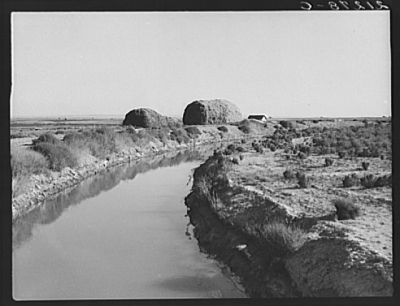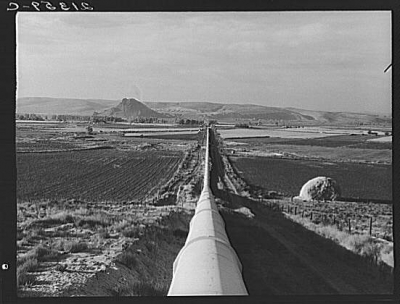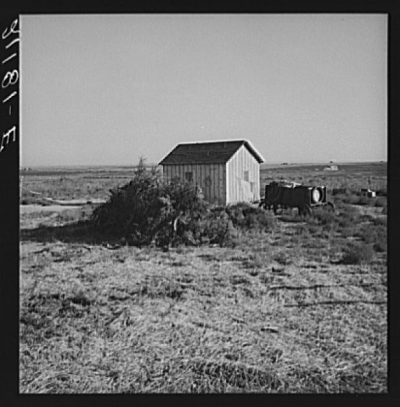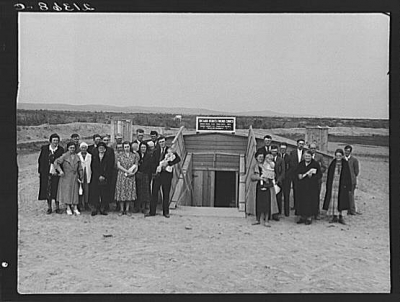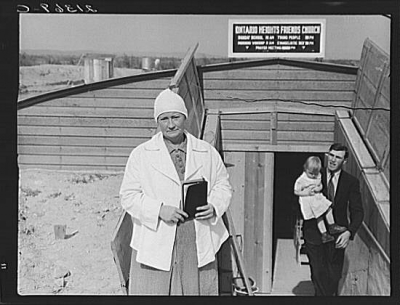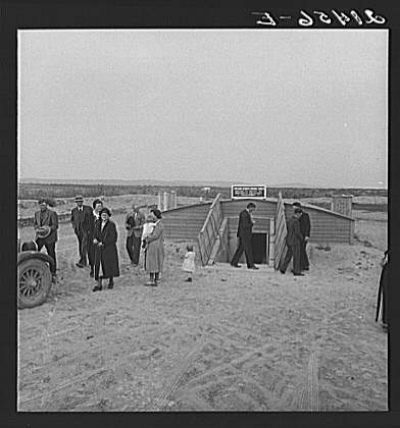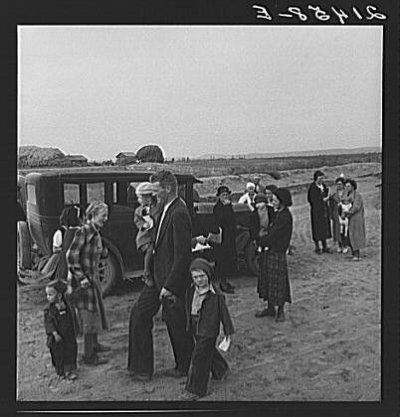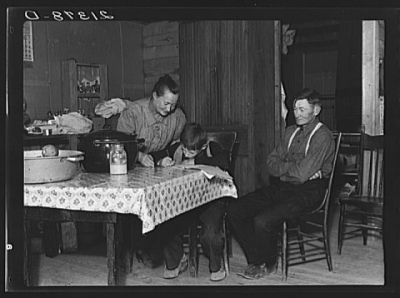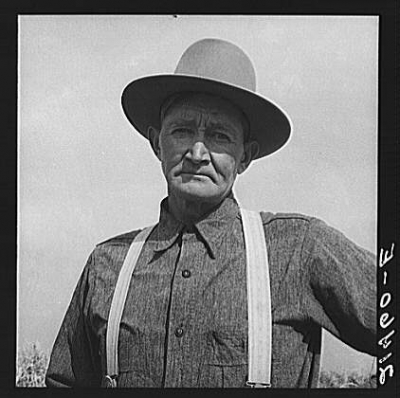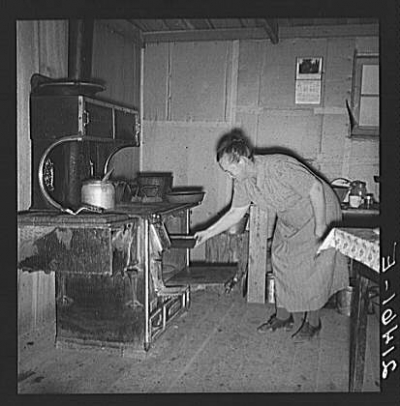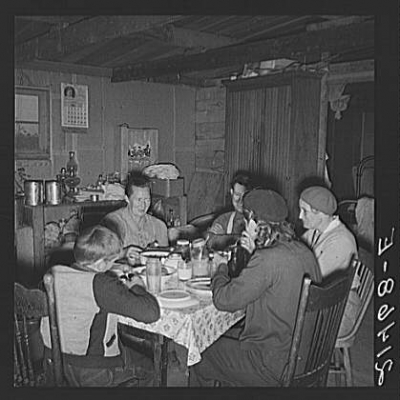From DARING TO LOOK: Photographs and Reports from the Field by Dorothea Lange, by Anne Whiston Spirn (University of Chicago Press, 2008).
DATE: October 11-17, 1939
***SUBJECT: Dead Ox Flat, Malheur County, Southeastern Oregon. [Make link to my text on Dead Ox Flat]
Refer to General Caption No. 66 on Malheur County.
Water was delivered to the 14,000 acres known as the Dead Ox Flat Division in 1937. These lands lie on a bench north of the Malheur River. The farmers on the flat are all now engaged in building up the soils by planting alfalfa and red clover hays so as to eventually produce diversified crops. “Three years ago (1936) this was all sage brush, not a plowed furrow on it, no green spear, no house, no road.”
I
***This group shows the character of the landscape.
21182E, 21248E, 21278C, 21279C, 21290C, 21293C, 21362C, 21556D, 21582D, 21598D
II
***This group shows the church, a basement construction. [Make link to my text on the Quaker church] It was established and built in May, 1939, by about twenty Quaker families who had settled on the flat. The group also shows the congregation of the church after services on Sunday morning.
Excerpts from the sermon, heard through the window:
“The easiest time for Christians to lose faith is when hard times come.”
“Just because we have to go through these things is no reason to become separated from the love of God.”
“It’s a good thing to know that God won’t fail us.”
“All these distresses instead of turning God away from us will make Him love us all the more.”
“There is an eternal Security for those who are eternally faithful.”
“Those who are lovers of God shall never perish—so we can face Life because there are Provisions for us.”
The closing hymn was “Joy Will Come Tomorrow.”
21181E, 21367C, 21368C, 21373C, 21375C, 21456E
III
This group shows the homes of seven families who are establishing farms on Dead Ox Flat. [Only one of the seven is included here.]
***Name: E. D. Wardlaw (not FSA borrowers) [Make link to my text on the Wardlaws]
The Wardlaw family sold their farm in northwest Arkansas and left on July 20, 1936, for southeastern Oregon. They had heard about the land from relatives who live in Idaho. They were one of the first families on the flat. They have two half-grown sons, own forty acres of land free and clear, four cows, garden, chickens, and live in a dugout basement house. They have no well yet. Photographs were made after church service, early Sunday afternoon. The Wardlaws are not members of the Friends church, “but we like to worship with them.”
Mr. Wardlaw says:
“I’ve learned to irrigate by main strength and awkwardness, and the neighbors told us.”
“We’ll have a home here some day. That pasture over there is our living now. That and our chickens. Our cream check is about $7.00 a week, and we don’t buy much of our living out of the store. We wasn’t raised that way.”
Mrs. Wardlaw says:
“We lived like Injuns when we first come here, but we’ve never lacked for anything to eat since we come. We have no lack.”
“The neighbors back home are different. They don’t want to exchange help out here. First time we butchered we gave our neighbors a mess. They thought we was crazy. We was raised to be friendly and divide up. Every one here seems to be equal, but it seems so strange.”
“There was a hundred came the last night I lived in Arkansas. We opened up thirteen freezers of ice cream that night — and they was all from right around at my door.”
21377D, 21378D, 21389D, 21404D, 21460E, 21461E, 21462E, 21463E, 21464E, 21466E, 21469E



